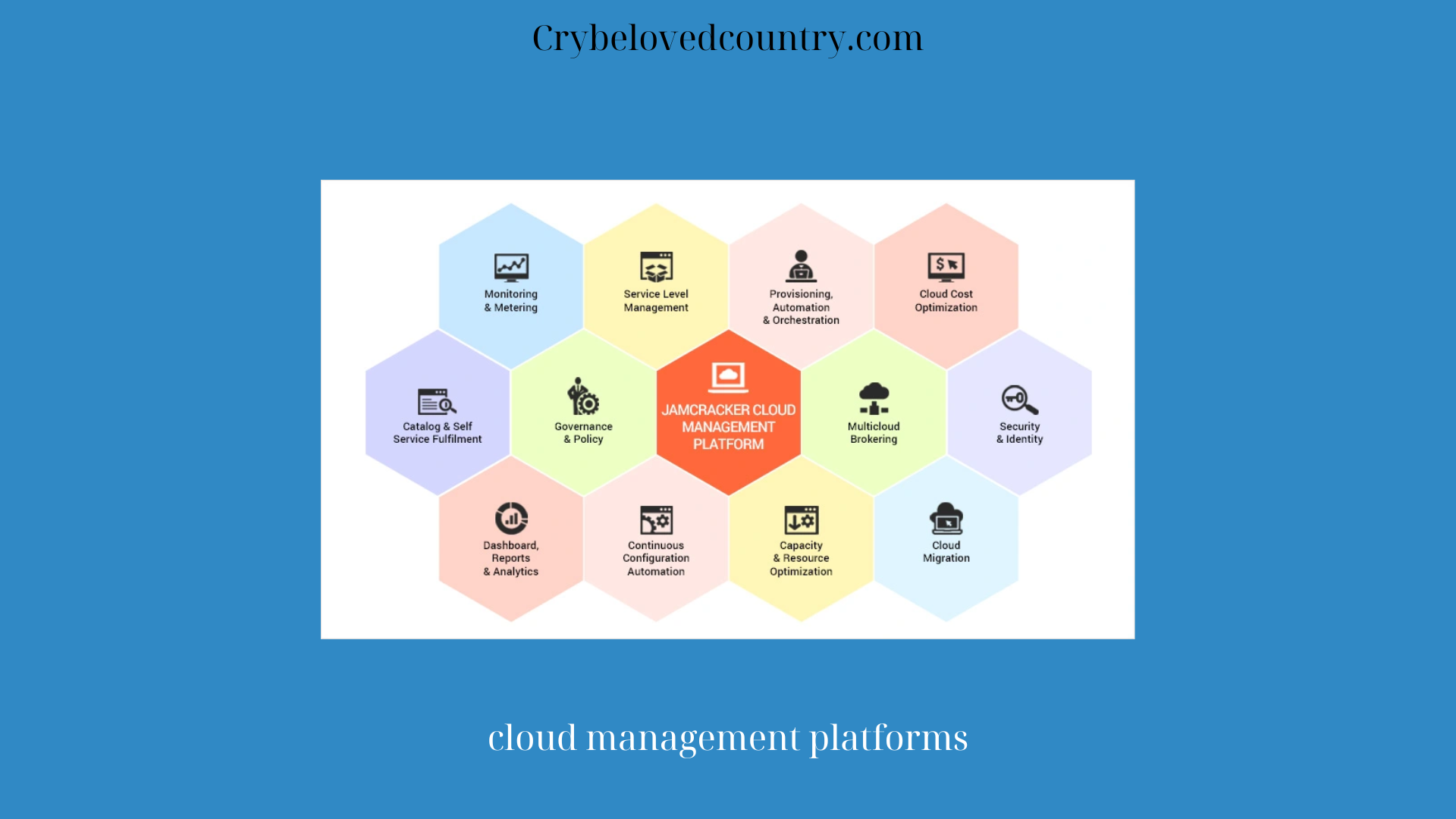In today’s digital landscape, businesses are increasingly turning to cloud computing to store and manage their data. The cloud offers numerous benefits, such as scalability, flexibility, and cost savings. However, as companies adopt cloud services, they often encounter challenges in managing and optimizing their cloud infrastructure. This is where cloud management platforms play a crucial role. In this article, Crybelovedcountry will explore the concept of cloud management platforms and how they can help streamline your cloud infrastructure, making it more efficient and easier to manage.
Exploring Cloud Management Platforms: Streamline Your Cloud Infrastructure

Understanding Cloud Management Platforms
Cloud management platforms are comprehensive tools designed to simplify the management of cloud resources and services. These platforms provide a centralized interface that allows businesses to monitor, control, and optimize their cloud-based applications, data, and infrastructure. With a cloud management platform, organizations can gain visibility into their entire cloud environment, enabling them to make informed decisions, allocate resources effectively, and ensure optimal performance.
Key Features and Capabilities
Cloud management platforms offer a wide range of features and capabilities to streamline cloud infrastructure management. Let’s explore some of the key functionalities:
- Provisioning and Deployment: Cloud management platforms enable businesses to automate the provisioning and deployment of cloud resources. This includes creating virtual machines, configuring network settings, and allocating storage. By automating these processes, organizations can reduce manual errors, save time, and ensure consistency across their cloud infrastructure.
- Resource Monitoring and Optimization: Cloud management platforms provide real-time monitoring and performance tracking of cloud resources. They offer insights into resource usage, performance metrics, and costs. With this information, businesses can identify underutilized resources, optimize resource allocation, and make informed decisions to improve efficiency and cost-effectiveness.
- Security and Compliance: Cloud management platforms help organizations maintain security and compliance standards across their cloud environment. They offer features such as access controls, encryption, vulnerability scanning, and compliance reporting. By enforcing security policies and ensuring regulatory compliance, businesses can mitigate risks and protect their sensitive data in the cloud.
- Cost Management and Optimization: Managing costs is a critical aspect of cloud infrastructure management. Cloud management platforms provide cost visibility and optimization tools to track cloud expenses, forecast future costs, and identify cost-saving opportunities. These platforms enable businesses to allocate resources efficiently, optimize usage, and eliminate unnecessary spending.
- Automation and Orchestration: Cloud management platforms support automation and orchestration of various tasks and workflows. They allow businesses to define and execute automated processes, such as scaling resources based on demand, scheduling backups, and implementing disaster recovery plans. Automation and orchestration streamline operations, improve efficiency, and enhance overall productivity.

Benefits of Cloud Management Platforms
Implementing a cloud management platform can yield significant benefits for businesses. Some of the key advantages include:
- Improved Visibility and Control: Cloud management platforms provide a holistic view of the cloud infrastructure, offering real-time insights into resource usage, performance, and costs. This visibility allows organizations to have better control over their cloud environment, enabling them to make data-driven decisions and optimize resource allocation.
- Enhanced Efficiency and Scalability: With automation and orchestration capabilities, cloud management platforms enable businesses to automate routine tasks, scale resources on demand, and streamline operations. This improves efficiency, reduces manual effort, and enhances scalability, allowing organizations to adapt quickly to changing business requirements.
- Cost Savings: Cloud management platforms help organizations optimize their cloud spending by identifying cost-saving opportunities, eliminating wasteful resource usage, and improving cost forecasting. By effectively managing costs, businesses can achieve significant savings and maximize their return on investment in the cloud.
- Enhanced Security and Compliance: Cloud management platforms offer robust security features and compliance controls to ensure that businesses meet industry standards and regulatory requirements. These platforms help organizations protect their data, enforce access controls, and monitor for security threats, enhancing overall security posture.
- Simplified Management and Collaboration: Cloud management platforms provide a unified interface for managing multiple cloud providers, services, and resources. This simplifies the management process, reduces complexity, and improves collaboration among different teams within the organization.
Choosing the Right Cloud Management Platform

Selecting the right cloud management platform is crucial for maximizing its benefits and aligning with your business requirements. Consider the following factors when choosing a cloud management platform:
- Compatibility: Ensure that the platform supports the cloud providers and services you currently use or plan to adopt in the future. Look for compatibility with major cloud platforms such as Amazon Web Services (AWS), Microsoft Azure, and Google Cloud Platform (GCP).
- Scalability: Consider the scalability of the platform to accommodate your organization’s growth and changing needs. The platform should be able to handle increasing resources and workloads seamlessly.
- Ease of Use: Look for a user-friendly interface and intuitive navigation. The platform should be easy to set up, configure, and use without requiring extensive training or technical expertise.
- Customization and Integration: Assess the platform’s ability to integrate with existing tools, systems, and processes within your organization. Consider whether it offers customization options to tailor the platform to your specific requirements.
- Support and DocumentationCloud management platforms offer a wide range of features and capabilities to streamline cloud infrastructure management. Let’s explore some of the key functionalities:
- Provisioning and Deployment: Cloud management platforms enable businesses to automate the provisioning and deployment of cloud resources. This includes creating virtual machines, configuring network settings, and allocating storage. By automating these processes, organizations can reduce manual errors, save time, and ensure consistency across their cloud infrastructure.
